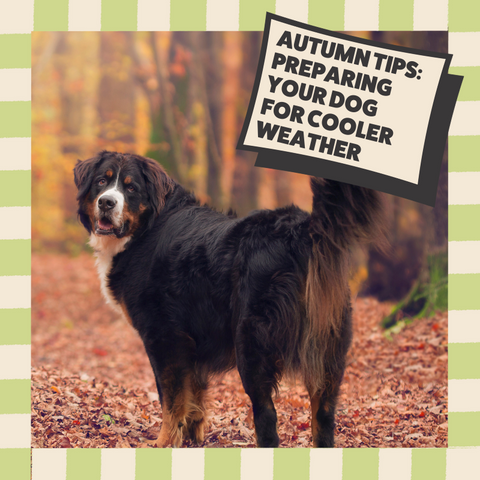Autumn Grooming Tips: Preparing Your Dog for Cooler Weather
As the leaves turn vibrant shades of red, orange, and yellow, and a crisp chill fills the air, autumn signals a transition not only in our wardrobes but also in how we care for our furry friends. With cooler weather approaching, it's essential to adjust your dog's grooming routine to ensure they remain comfortable, healthy, and happy throughout the autumn season.
Here are some useful grooming tips to help you prepare your dog for the cooler months ahead.
1. Brush Their Coat Regularly
As temperatures drop, your dog's coat will start to change. Many dogs shed their summer coats in preparation for thicker, warmer winter fur. This shedding can lead to tangles and matting if not managed properly. Regular brushing helps remove loose hair, reduces shedding around your home, and prevents matting.
For short-haired dogs, brushing once or twice a week with a soft-bristle brush should be enough. For long-haired breeds, more frequent grooming with a slicker brush or comb is necessary to keep their coats tangle-free and healthy. This also helps distribute natural oils throughout their fur, keeping it shiny and well-moisturised as the air becomes drier.
If you need any advice on brushing your dog, or want to know the best brush for their coat type, pop into our store where a qualified dog grooming specialist can give you a helping hand!

- Bathe with Care
While it's important to keep your dog clean, overbathing can strip their skin of natural oils, leading to dryness and irritation – especially in autumn when the air becomes less humid. Opt for a moisturising dog shampoo that hydrates the skin and coat. Depending on your dog's activity level and breed, aim for a bath every 4-6 weeks. Remember to thoroughly dry your dog after each bath, as damp fur in cooler weather can lead to chills or discomfort.

3. Pay Attention to Paws
Autumn brings more than just cooler temperatures; it also brings wet leaves, mud, and possibly frost. These elements can be harsh on your dog's paws. Inspect their paws regularly for signs of dryness, cracking, or irritation. Apply a pet-safe paw balm or moisturiser to keep their pads soft and hydrated.
Additionally, keep their nails trimmed. Longer nails are more likely to snag on twigs, leaves, or rough terrain, which can be painful or lead to injury. Regular nail trims will also help your dog maintain better traction on slippery surfaces.
4. Monitor Ear Health
With autumn comes increased moisture from rain and dew, which can lead to a higher risk of ear infections, particularly in dogs with floppy ears or those prone to ear issues. Clean your dog's ears regularly with a vet-approved ear cleaner to remove dirt, debris, and excess moisture. Avoid using cotton buds, as they can push debris further into the ear canal. Instead, use a soft cloth or cotton wool. Watch for signs of discomfort, such as scratching, redness, or a foul odour, which could indicate an infection.
5. Keep Up with Flea and Tick Prevention
While fleas and ticks are often associated with warmer months, they can remain active well into autumn, especially in areas where the climate remains mild. Continue using flea and tick prevention treatments throughout the season to protect your dog from these pests. Regular grooming, including thorough checks for fleas and ticks, will help you spot any issues early and ensure your dog stays parasite-free.

6. Adjust Diet for Healthier Skin and Coat
With the change in weather, consider adding supplements to your dog’s diet to support their skin and coat health. Omega-3 and omega-6 fatty acids, often found in fish oil supplements, can help maintain moisture in the skin and reduce the risk of dryness or flaking. Always consult with your vet before adding any supplements to ensure they are appropriate for your dog’s breed, age, and health condition.

7. Consider a Trim, But Don’t Overdo It
If your dog has a long or thick coat, you might be tempted to give them a trim as the seasons change. While it’s okay to trim around sensitive areas like the paws and sanitary regions, avoid giving them a full haircut as their longer fur provides natural insulation against the cold.
Get in touch and speak to one of our professional groomers to discuss the best approach for your dog’s breed and coat type.
Conclusion
Autumn is a beautiful season to enjoy outdoor adventures with your dog, but it also requires some adjustments to their grooming routine to keep them comfortable and healthy. By following these grooming tips, you can ensure that your dog is well-prepared for the cooler weather ahead.
Regular brushing, proper paw care, maintaining a balanced diet, and keeping up with flea and tick prevention are all essential steps to keep your furry friend looking and feeling their best this autumn. Embrace the season with your pup, knowing they're ready to tackle the crisp autumn air with confidence and joy!







